This course is widely used in agile teams. It is suitable for scrum masters, product owners and agile team members. You will learn how to write requirements for agile development teams and what mistakes are made. You will then write a User Story and together we will go over the requirements feedback. After a few examples, you’ll be able to write down requirements as well as give feedback to others.
Size of user stories
Scrum development teams usually plan a few small user stories in a sprint. That’s why in the training you will also learn how to tell if your requirement is too big. You’ll also learn how to break down requests into smaller ones using splitting patterns.
Preparing for the course
Bring your own assignment that you want to try preparing requirements on. By working on an assignment that is realistic and in the context of your business, the course will be of great value to you. The course instructor has experience not only as a Scrum Master, but also as an IT and business analyst and has run a number of workshops on preparing User Stories.
Agenda
- User story structure
- Syntax
- Possibility to involve persona
- Examples of incorrectly entered requirements – what’s wrong with them?
- Writing your own user story and feedback
- INVEST Rule
- How to recognize too big a requirement for development?
- Splitting patterns – how to split requirements into smaller ones
- Example – splitting requirements into smaller ones
What its participants said about the training
The ‘How to Write User Stories Correctly’ training was well structured and informative, with lots of practical examples. We were actively involved in creating user scenarios and stories from our environment, which immediately allowed us to put theory into practice. The lecturer, Honza Šrámek, was very helpful and professional and did not hesitate to answer every curious question we had. His vast experience helped us to meet all the expectations we had set at the beginning of the course. Thank you for a beneficial training and a fine experience.
A lecturer who will guide you through the training
Jan Šrámek is an enterprise agile coach with experience with agile from both corporate companies and start-ups. The approach to agile transformations, as well as to training, is based primarily on practical experience, where he worked for approximately 7 years as an analyst and later as an architect in development teams in the financial sector. He experienced a number of changes that agile and agile transformation brings. It adheres to the principles of Agnostic agile. He prefers to set agility according to the context in your company, instead of a dogmatic approach according to the manual. Honza's strength is diplomacy, but also great patience, which allows him to work with agility even with quite distinctive personalities.In addition to experience in the SW development environment, Honza has also gained a lot of experience in the field of agility in business, human resources, finance, management coaching and more. He strives to enforce the principles and rules he recognizes with other employees and collaborators at Lucid Bay Digital. A number of agile principles are reflected in the functioning of Lucid Bay Digital and so the things we recommend we live by ourselves
Optional training modules
These modules/discussion modules can be added to our trainings by agreement. If you didn't find what you were interested in, don't worry, contact us and we'll come to an agreement.
- Stakeholders and agility
- First steps with an agile team and how to gain the trust of the team
- Retrospectives, what are their parts, what to do if the team seems to have retrospectives too often
- Getting to know Atlassian JIRA and Atlassian Confluence
- How the development team's standard SDLC (SW development life cycle) works
- How the analysis will changes after the transition to agile
- Types of tests in agile teams, changes in testing after the introduction of agile
- How brainstorming works, the possibility to try brainstorming facilitation on a selected topic and feedback
- MVP – Minimum Viable Product
- Agile roadmaps
- OKR (Objectives and Key Results)
Similar and related training
We will teach you the basics of Kanban and how to recognize when Kanban is suitable to use. The course is practical and suitable for beginning scrum masters.
You will learn the necessary theory and then try to write your own User Stories. In addition, we will try to break down too large User Stories into smaller ones.
The first part of the Lean Startup course where we will teach you how to prepare a simple business plan without wasting a large amount of time with its preparation and yet bringing you useful information.
This course is literally packed with practical experience gained from working with agile teams and agile transformations. We will take you through the basics of the Scrum framework from theory to practice. The course is designed for members of agile teams or those interested in understanding agile approaches.
This is a series of several trainings that put together a minimum of what a Scrum Master should be able to do. Since it is a comprehensive course, it is possible to arrange the division of this course into several parts.
On the course you will learn what every good product owner should be able to do. In addition to the methodological basics, you will also learn how to prepare a product vision, a product roadmap and how to break down requirements into a product backlog.
Non-binding request for training or customized training
Are you interested in training? Or would you like to tailor the training to your needs? Write us!


